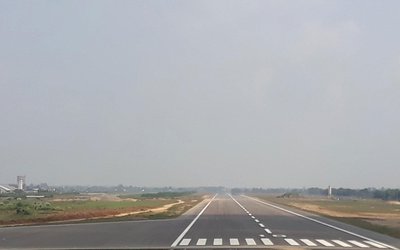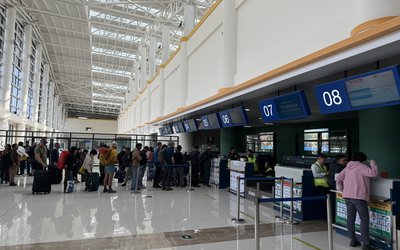More on Tourism






Scientists are trying to pinpoint the impacts of global warming on Himalayan glaciers and regional water supplies.
New report outlines potential impacts of climate change to regional water supplies
Many of the world’s glaciers and ice sheets are retreating in the face of global warming, but a few are stable or growing — including glaciers in the western Himalaya Mountains, according to a new report from the National Research Council.
The report was aimed at determining how changes to glaciers in the Hindu Kush-Himalayan region, which covers eight countries across Asia, could affect the area’s river systems, water supplies, and the South Asian population.
The mountains in the region form the headwaters of several major river systems — including the Ganges, Mekong, Yangtze, and Yellow rivers — which serve as sources of drinking water and irrigation supplies for about 1.5 billion people. The eastern Himalayas and Tibetan Plateau are warming, and the trend is more pronounced at higher elevations. Models suggest that desert dust and black carbon, a component of soot, could contribute to the rapid atmospheric warming, accelerated snowpack melting, and glacier retreat.
Glacier melt contributes water to the region’s rivers and streams,but retreating glaciers over the next several decades are unlikely to cause significant change in water availability at lower elevations, which depend primarily on monsoon precipitation and snowmelt, the report concluded. Variations in water supplies in those areas are more likely to come from extensive extraction of groundwater resources, population growth, and shifts in water-use patterns.
High-elevation areas could see changes in the timing of season floes, with the impacts of glacial retreat most evident during the dry season, especially in the western part of the region, where glacial melt is more important to the river systems. Nevertheless, shifts in the location, intensity, and variability of both rain and snow will likely have a greater impact on regional water supplies than glacier retreat.
Melting of glacial ice could play an important role in maintaining water security during times of drought or similar climate extremes. For example, during the 2003 European drought, glacial melting played an important role in sustaining Danube River flows.
Water stored as glacial ice could serve as the Himalayan region’s hydrologic insurance, adding to streams and rivers when it is most needed. Although retreating glaciers would provide more meltwater in the short term, the loss of water stored in glaciers could become problematic over the long term.
Water resources management and provision of clean water and sanitation are already a challenge in the region, and the changes in climate and water availability warrant small-scale adaptations with effective, flexible management that can adjust to the conditions, according to the report.
Current efforts that focus on natural hazard and disaster reduction in the region could offer useful lessons when considering and addressing the potential for impacts resulting from glacial retreat and changes in snowmelt processes in the region.
Many basins in the region are “water-stressed” due to both social changes and environmental factors, and this stress is projected to intensify with large forecasted population growth, the committee concluded. Climate change could exacerbate this stress in the future.
Although the history of international river disputes suggests that cooperation is a more likely outcome than violent conflict in this region, social conditions could change. Therefore, modifications in water supplies could play an increasing role in political tensions, especially if existing water management institutions do not evolve to take better account of the region’s social, economic, and ecological complexities, the report concluded.
http://summitcountyvoice.com/2012/09/17/global-warming-tracking-himalayan-glaciers/







